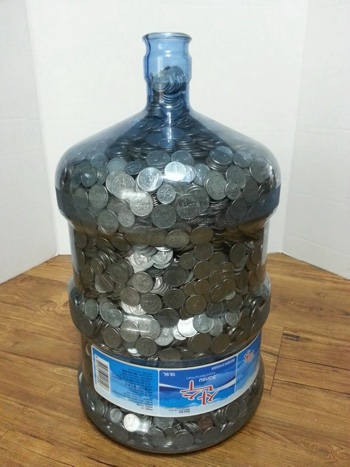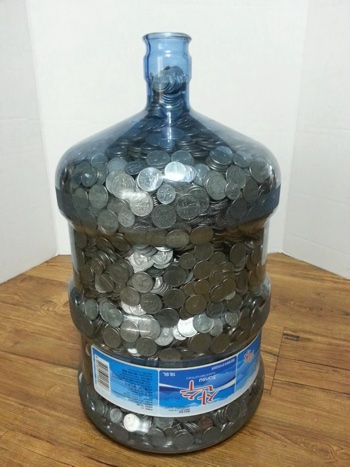If you don’t remember, Acorns was a hot app for a little while due to their primary feature of allowing you to automatically “round up” your purchases and invest them into a portfolio of ETFs. So if you made a $10.45 purchase, it would be rounded up to $11.00 and $0.55 would be invested.
This Axios article managed to obtain some proprietary data from Acorns and reverse-engineers it to estimate how much the average Acorns user saved (and spent) from their Roundups from 2015 to 2024. While the big-picture conclusions aren’t exactly surprising, the fintech geek side of me appreciated the peek into these details. My takeaways:
- Survivorship bias. These numbers are taken from roughly 50,000 of their most dedicated users from 2015 to March 2024. Nine years is a long time in the fintech world! Everyone who closed their account before March 2024 was not included.
- Average roundup per user: $43 a month. Times 9 years = $4,644. Assuming randomly-distributed purchases, that’s about 86 purchases a month. This assumes no other deposits, no withdrawals, and no investment growth.
- Average withdrawal per user: $28 a month. In reality, over half of these Roundups were withdrawn, which led to a lower final balance.
- Average additional deposit per user: $86 a month. In addition to the automated round-ups, this is the average additional deposit per month.
Did Acorns make users rich? The article title was “How much Acorns savers amassed by investing spare change”? Their conclusion:
Now we know just how meaningful the amount is — enough to buy a decent vacation, but not remotely enough to make a down payment on a house.
Well… yeah? Did anyone expect what used to be a jar of coins to cover a house downpayment? Back in the day, the big jar of coins also often went towards a family vacation.
My wife’s family once filled up one of those 5-gallon office water cooler jugs, and they weren’t alone. From Reddit/Imgur, this 5-gallon jug held very close to $3,000 and took the user 7 years to fill:

Did Acorns inspire additional savings? The optimistic way to think of Acorns is that it can show you that saving is indeed possible and easier than you thought, and that realization can inspire even more savings. A not-so-optimistic way is to point out that paying $3 every month to help you put aside $43 of your own money is kind of a big percentage. Especially if you’re going to take a lot of it out and disrupt the compounding growth.
The real-world results are that amongst Acorn’s most loyal users (the ones that kept using and paying for the service for 9 years), roughly and on average, along with the $43 in monthly Roundups contributed an additional $86 a month via recurring deposits but ended up withdrawing roughly half of the total amount (including any investment gains). My view is that this account was treated more commonly like a small emergency fund cushion, which is not a bad thing but a much smaller scale than they might have hoped for.




